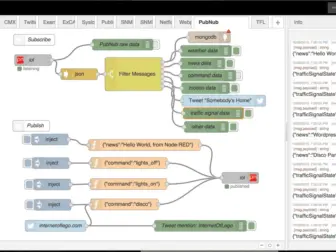Tag - IoT device integration
Seamlessly Merging Tech: Strategies for Successful IoT Device Integration into Existing Systems
Seamlessly Merging Tech: Strategies for Successful IoT Device Integration into Existing Systems
The Internet of Things (IoT) has emerged as a transformative force in the tech world, propelling us towards a more interconnected existence where devices communicate and work together to improve efficiency, enhance security, and create a seamlessly integrated environment. However, integrating IoT devices into existing systems can pose a multitude of challenges, ranging from compatibility issues to security concerns. To successfully merge these technologies, a strategic and methodical approach is essential.
One of the first considerations in IoT device integration is ensuring compatibility with existing systems. This can be addressed through the selection of IoT devices that support standard communication protocols, such as MQTT, CoAP, or Zigbee. These protocols promote interoperability, allowing devices from different manufacturers to work in harmony. Moreover, open-source platforms can offer the necessary flexibility for a wide array of integration needs, providing a customizable solution that can be tailored to specific system requirements.
Security is another major concern when integrating IoT devices. The expansion of the network’s endpoints with each connected device introduces new vulnerabilities that can be exploited by cyber threats. Therefore, a robust security strategy must be put in place, encompassing strong encryption methods, regular firmware updates, and secure authentication mechanisms. Additionally, employing a segmented network structure can isolate IoT devices, minimizing the impact of potential breaches on the core system.
The scalability of the IoT framework is also a critical factor. A system that works for a handful of devices may become overwhelmed as more components are connected. Planning for future growth is essential, with a focus on creating a flexible architecture that can accommodate increasing amounts of data and more complex interactions. This foresight can prevent costly overhauls or compatibility headaches as the IoT ecosystem expands.
Furthermore, user interface (UI) and user experience (UX) are central to IoT integration. Systems must be user-friendly and provide actionable insights rather than overwhelm users with data. To achieve this, integrating IoT devices with smart analytics and machine learning can offer intuitive controls and predictive maintenance, ultimately enhancing user engagement and system efficiency.
To streamline the integration process, it’s advisable to begin with a pilot program. Implementing a small-scale version of the proposed system can help identify potential issues early on, allowing for adjustments before a full-scale roll-out. This step-by-step approach not only mitigates risk but also enables a gradual learning curve for stakeholders involved in managing the new IoT-infused environment.
Collaboration with experienced vendors who understand the nuances of IoT integration can be invaluable. These partnerships can provide access to expertise, reduce the time-to-market for IoT initiatives, and offer specialized support during and after the integration process.
Lastly, ensuring compliance with industry standards and regulations is crucial for IoT device integration. Staying abreast of the latest guidelines and legal requirements helps in maintaining the system’s integrity and users’ trust, while also avoiding legal repercussions.
In conclusion, integrating IoT devices into existing systems is a complex undertaking that requires careful planning, robust security measures, and an eye on future scalability. By focusing on interoperability, security, scalability, user experience, phased implementation, collaborative partnerships, and compliance, organizations can achieve a successful and secure IoT device integration that propels their operations into a more connected and efficient future.
